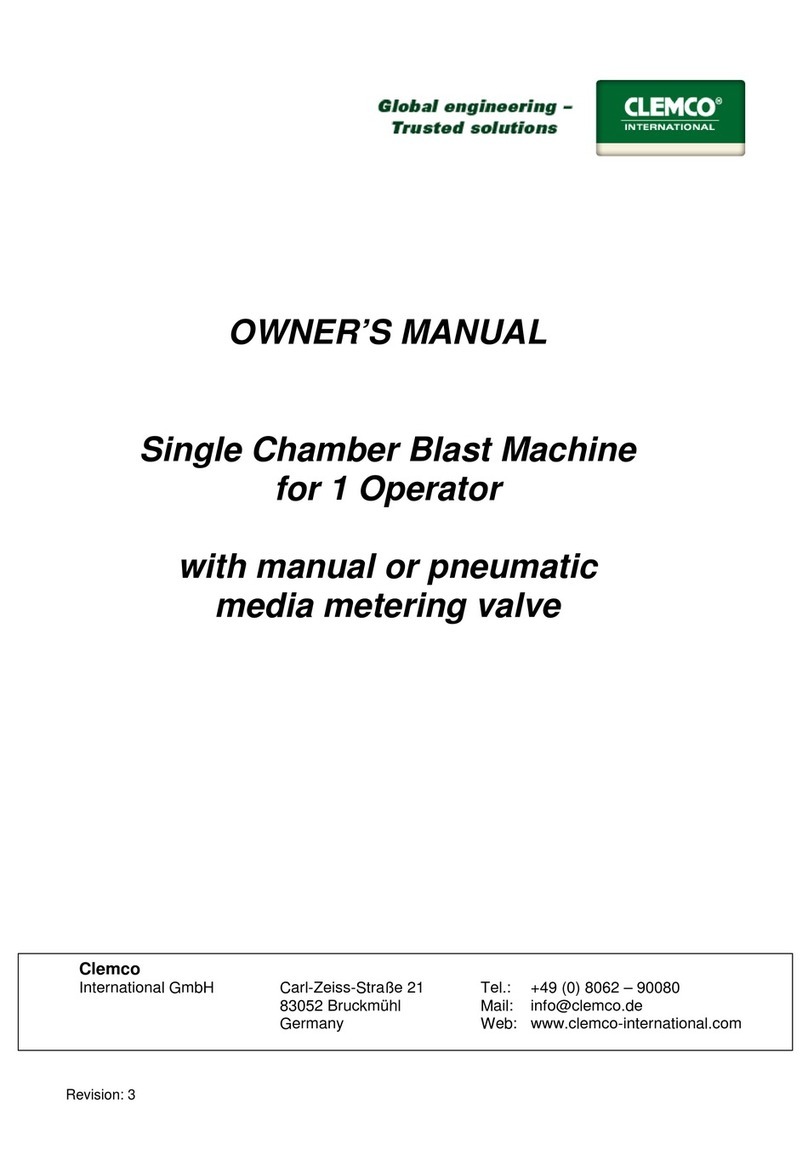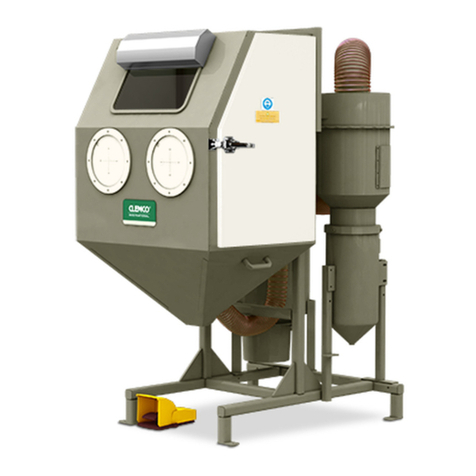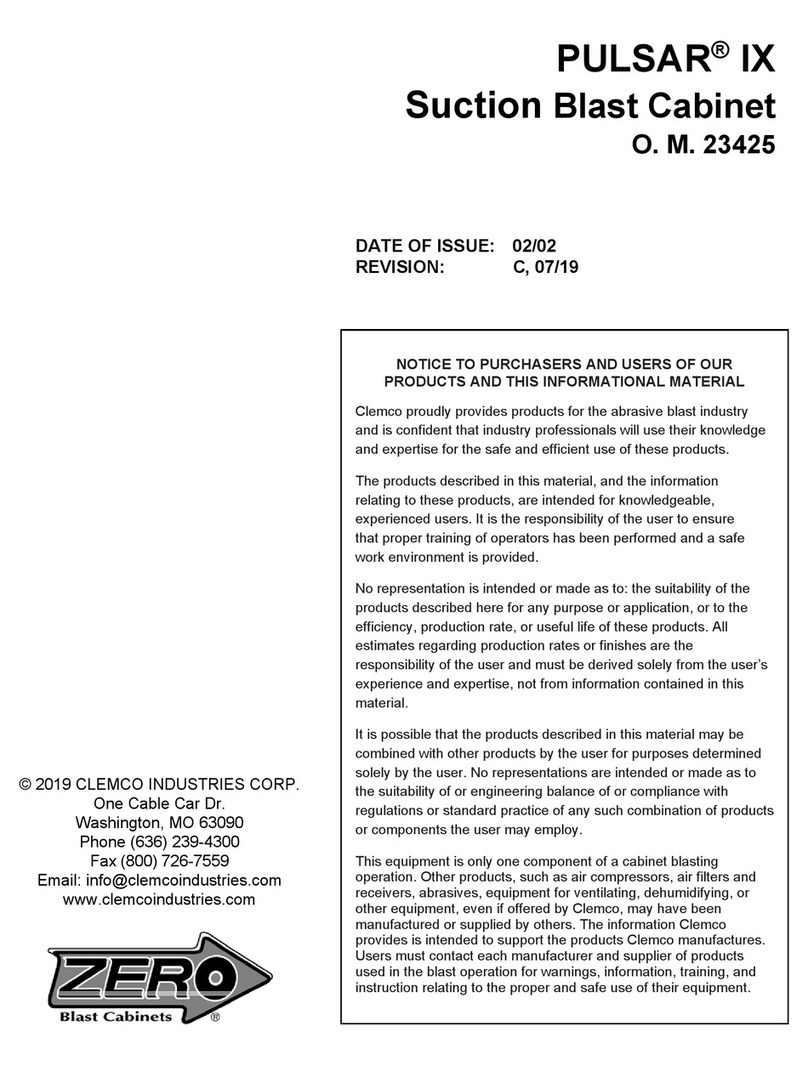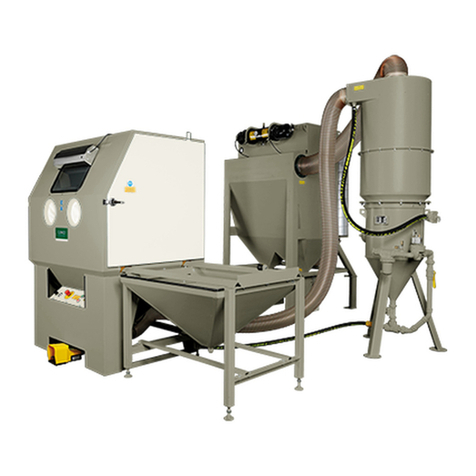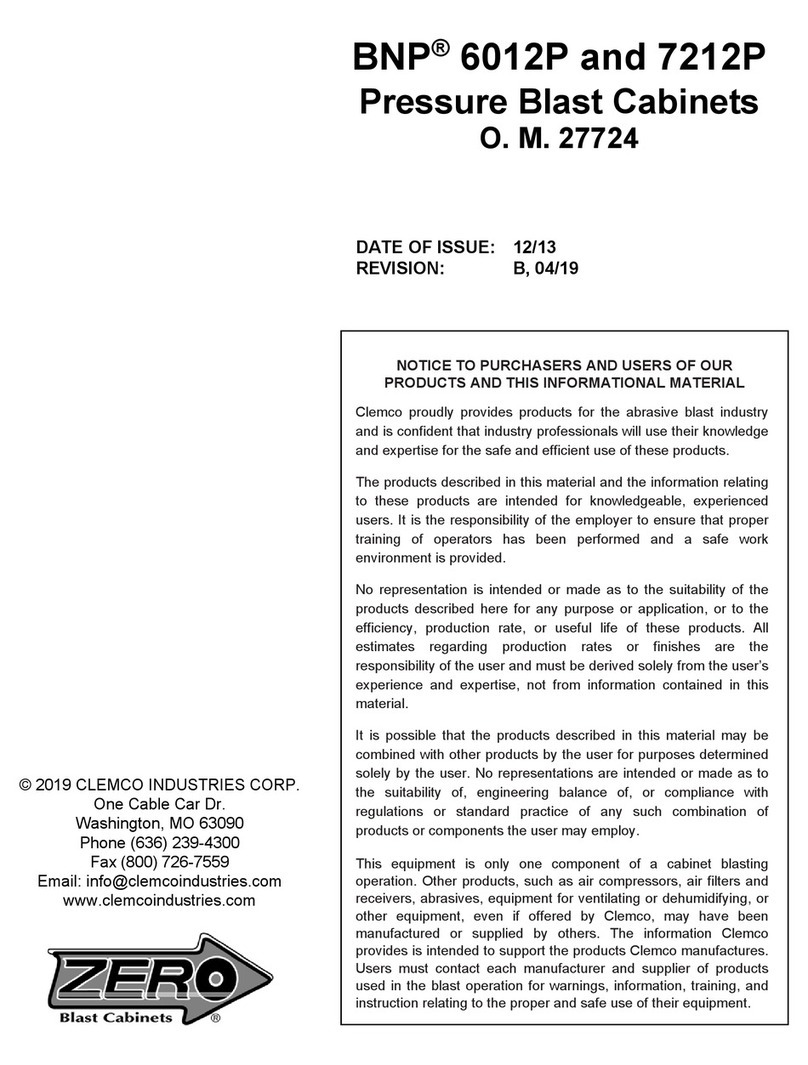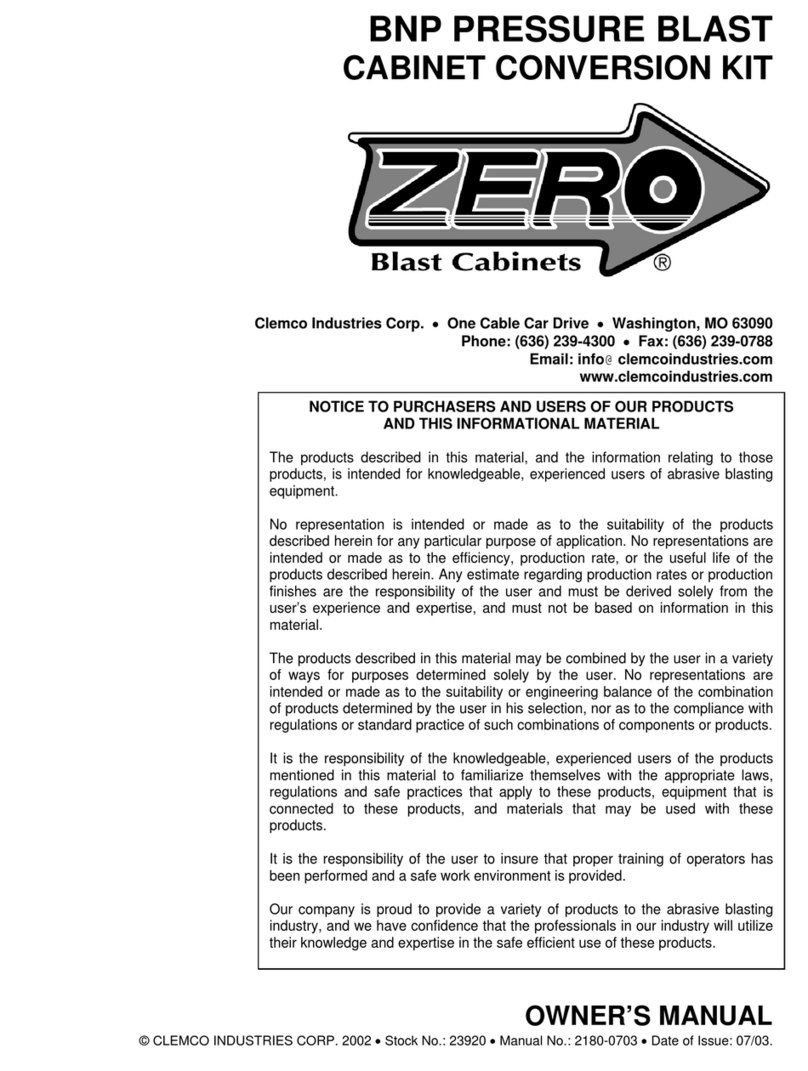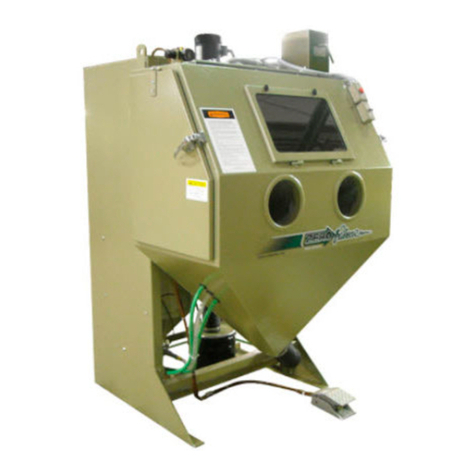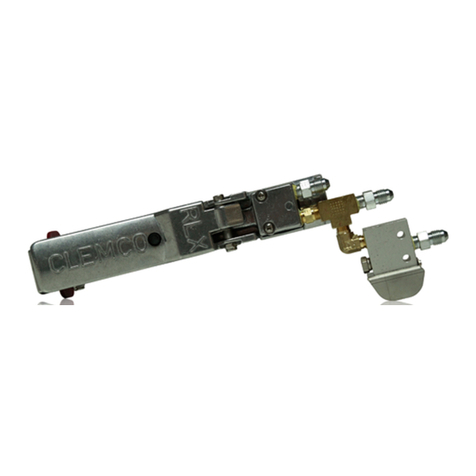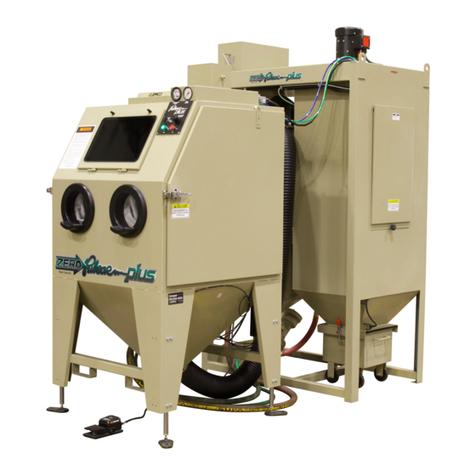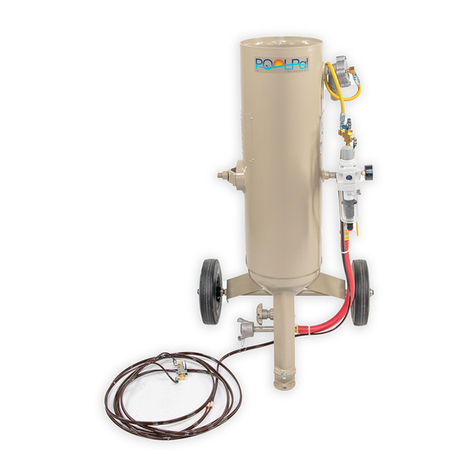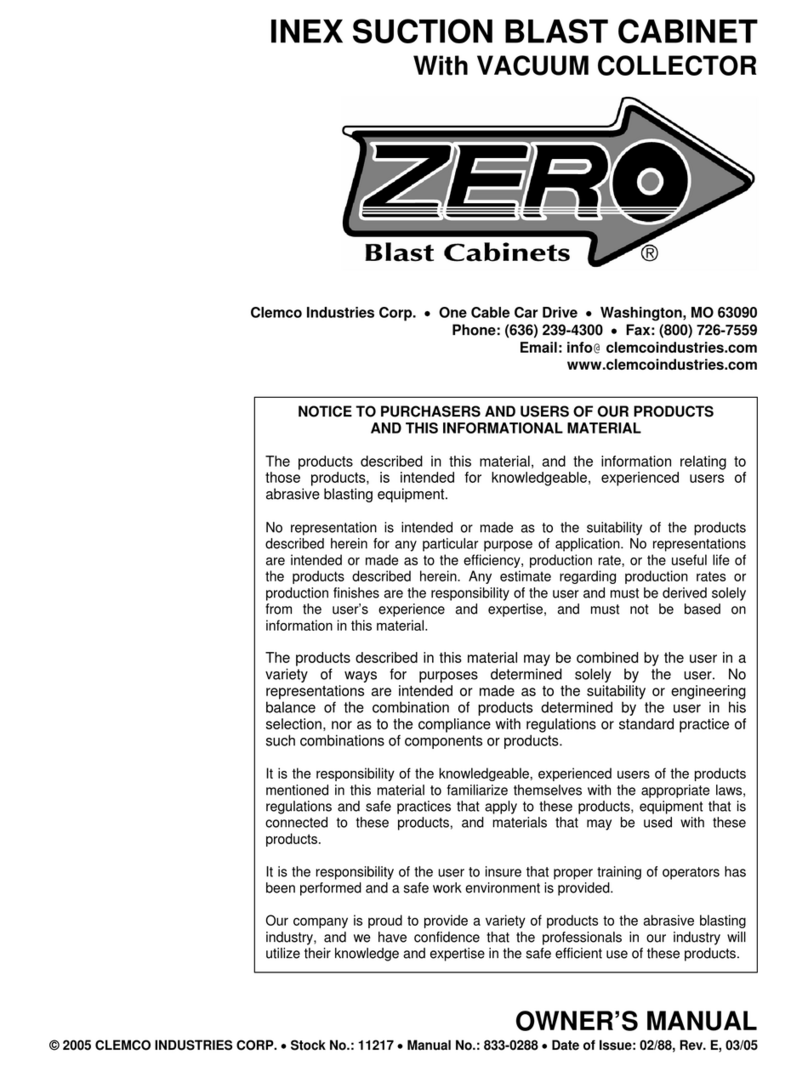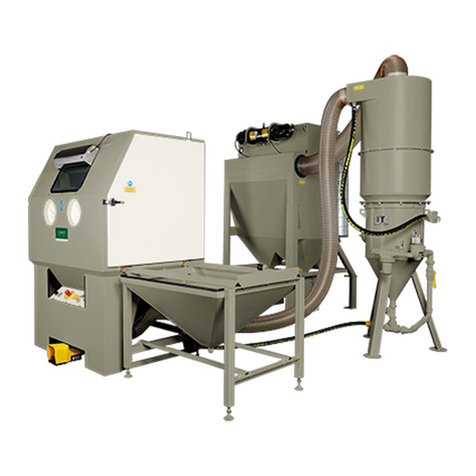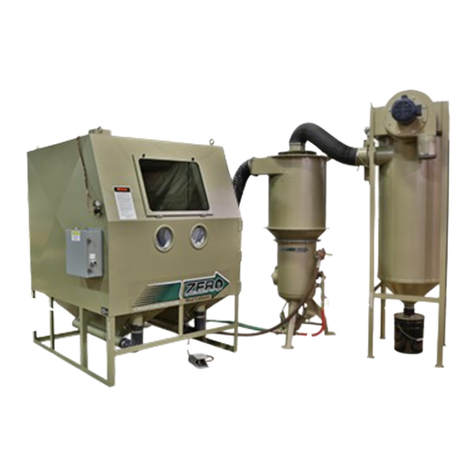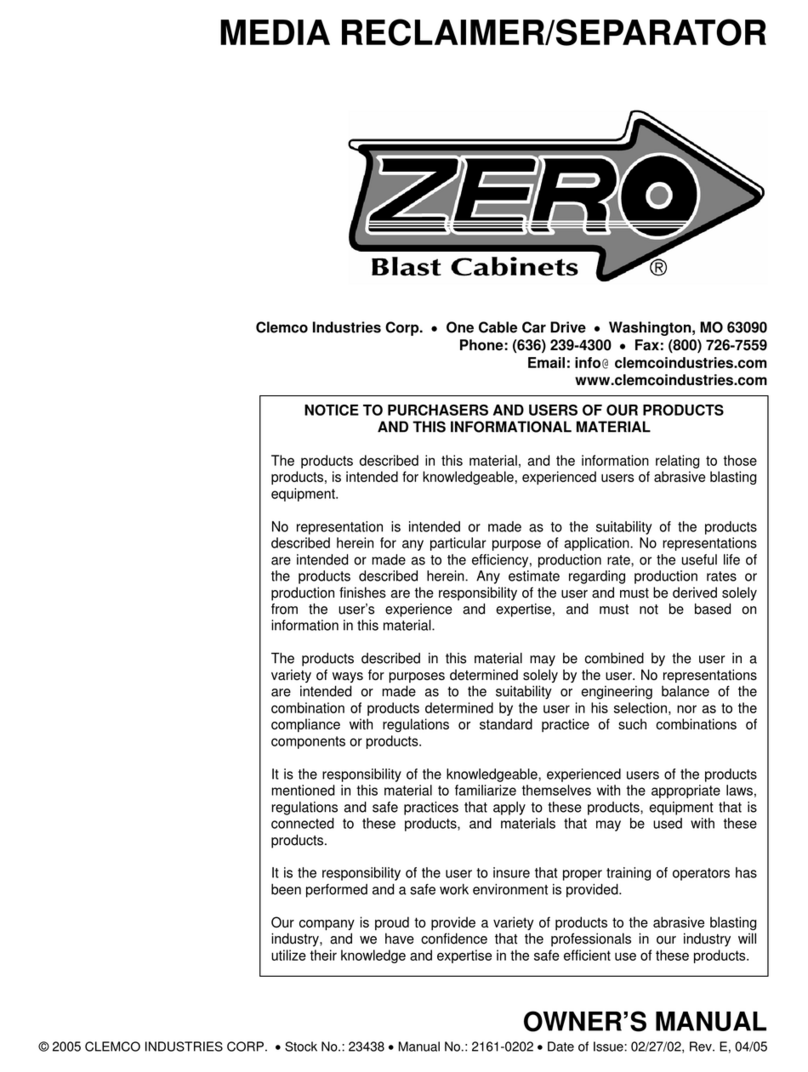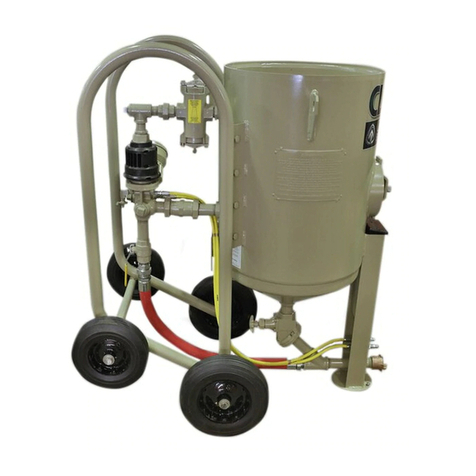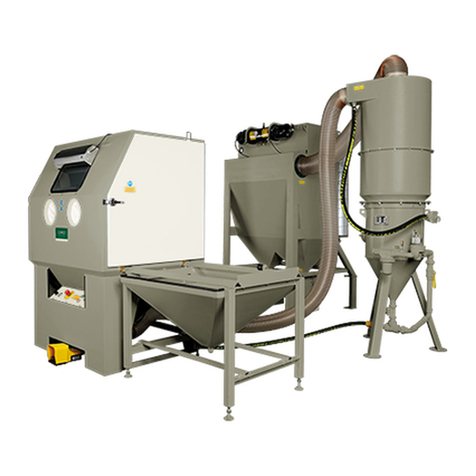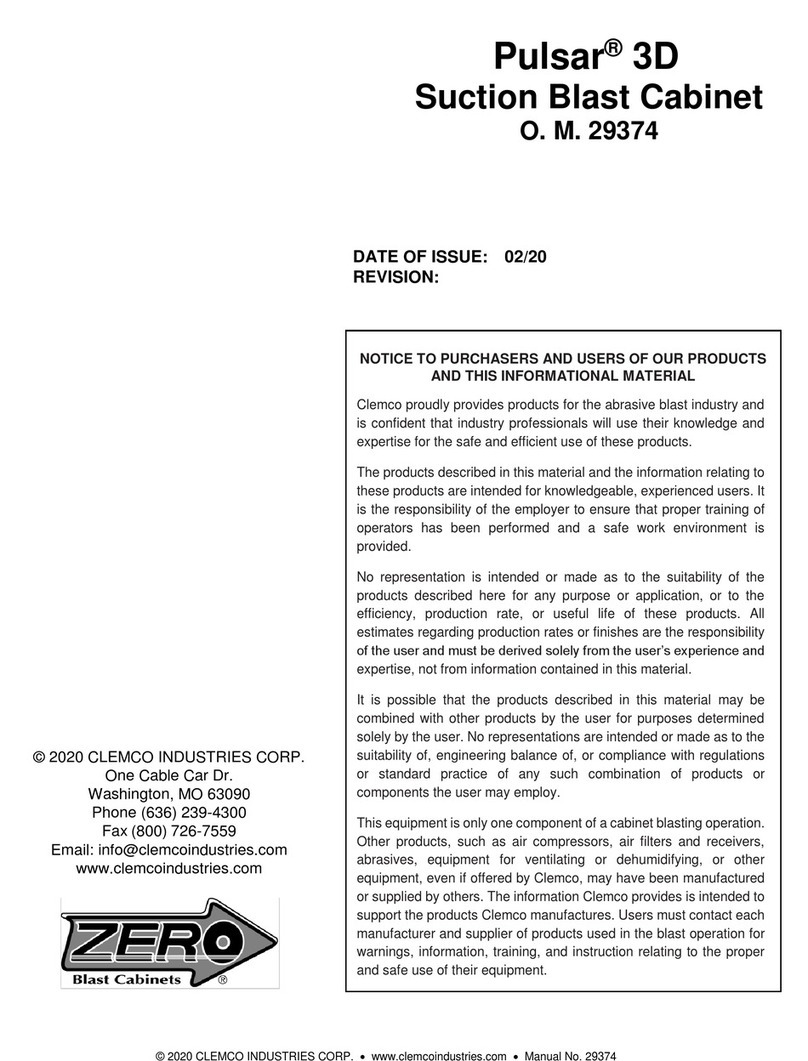
BNP 6012 and 7212 SUCTION BLAST CABINETS Page 4
© 2016 CLEMCO INDUSTRIES CORP. www.clemcoindustries.com Manual No. 27723, Rev A, 07/16
This guideline to media selection is based on standard 5/16orifice nozzle (5/32air jet) and average conditions,
(air pressure, media/air mixture, visibility, contamination of parts being cleaned, humidity, media breakdown,
reclaimer cleaning rate, etc.) As a rule, larger nozzles deliver more media, requiring higher performance from the
reclaimer. Larger nozzles decrease the maximum mesh size of media from those recommended. Media that is finer
than those recommended may decrease visibility, and, at some point, carryover to the dust collector. Media coarser
than those recommended may be too dense to recover from the cabinet hopper.
MEDIA TYPE
RECLAIMER SIZE STEEL GRIT STEEL SHOT PLASTIC GLASS BEAD ALUM. OXIDE
900 cfm with 6inlet Do not use Do not use N/A See 1.8.7 No. 6 to No. 12 46 to 180 mesh
1200 cfm with 6inlet 40 to 120 S230 to S170 Do not use No. 4 to No. 8 16 to 60 mesh
1200 cfm with 7inlet Do not use Do not use N/A See 1.8.7 No. 4 to No. 12 46 to 180 mesh
1800 cfm with 7inlet 25 to 120 S280 to S70 Do not use No. 4 to No. 8 16 to 60 mesh
1800 cfm with 8inlet Do not use Do not use N/A See 1.8.7 No. 4 to No. 12 36 to 180 mesh
Figure 3
1.8.3 Sand and Slag: Sand should NEVER be used for
abrasive blasting because of the respiratory hazards
associated with media containing free silica. Slags are not
recommended because they rapidly breakdown and are
not recyclable, making them unsuitable for cabinet
applications.
1.8.4 Silicon Carbide, Aluminum Oxide, and
Garnet: These are the most aggressive of the
commonly-used media. Aggressive media may be used,
but the service life of any components exposed to the
media will be reduced. To avoid unscheduled down time,
periodically inspect the reclaimer wear plate, flex hoses,
blast hose, and nozzle for wear.
When using aggressive media only occasionally, install an
optional aluminum oxide kit. The kit includes rubber
curtains for the cabinet interior and a boron carbide-lined
nozzle. When using aggressive media on a regular basis,
install the aluminum oxide kit and a fully-rubber-lined
reclaimer. NOTE Rubber-lined reclaimers are available as
factory-installed items and can be field installed on
reclaimers if they have removable tops and designed to
accept liners. Nozzles lined with boron carbide extend
nozzle wear life. See Optional Accessories in Section 9.1.
1.8.5 Glass Bead: Most beads are treated to ensure
free-flow operation even in environments of moderately
high humidity. Glass beads subjected to excessive
moisture may be reused only after thorough drying and
breaking up any clumps.
1.8.6 Lightweight and Fine-mesh Media: When
using lightweight (such as agricultural) media or fine
mesh (180-mesh and finer) media, the reclaimer inlet
baffle may need to be removed to retain media and
avoid carryover. On reclaimer models with bolt-on
removable tops, baffle removal and replacement is
easily accomplished. Reclaimers with welded-on tops
require grinding to remove the baffle and once it is
removed it cannot be replaced.
1.8.7 Plastic Media: Plastic and similar lightweight
and/or non-aggressive media are generally not
recommended for suction-style cabinets because the
lower blast velocity of suction blasting combined with the
softer and lighter weight media, do not provide the
media impact for productive blasting. Best performance
from plastic media is achieved with pressure blasting,
requiring a pressure vessel with a 60-degree conical
bottom. Refer to Clemco’s AEROLYTE cabinet line.
1.8.8 Bicarbonate of Soda: Bicarbonate of soda is
not recommended for use in standard cabinets. Bicarb is
a one-use media usually used and will quickly saturate
the filter cartridge(s). Best performance from bicarb
media is achieved with pressure blasting, requiring a
pressure vessel. Refer to Clemco’s AEROLYTE cabinet
line for cabinets that are specifically designed for use
with bicarbonate of soda.
1.9 Compressed Air Requirements
1.9.1 The size of the compressor required to operate
the cabinet depends on the size of the air jet and
blasting pressure. Unless otherwise specified, cabinets
are supplied with a No. 5 (5/32" orifice) jet. Refer to the
table in Figure 4 to determine air consumption. Consult
with a compressor supplier for suggested compressor
size based on the air consumption. NOTE: A separate
air line is required for the reverse-pulse dust collector
1.9.2 The air filter at the air inlet connection reduces
condensed water from the compressed air. Its use is
especially important in areas of high humidity, or when
using fine-mesh media. Moisture causes media to clump
and inhibits free flow through the feed assembly. If the
